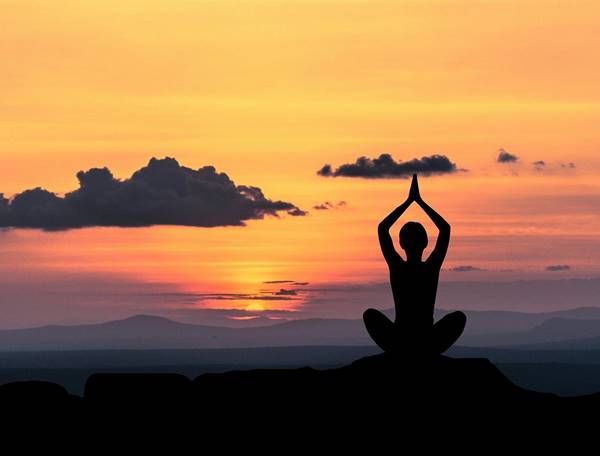Meditation is a practice that has been embraced by various cultures for centuries, offering a myriad of benefits to the mind and body. It is a way to calm the mind, enhance self-awareness, and cultivate inner peace.
However, there is no one-size-fits-all approach to meditation. Numerous techniques have evolved over time, each catering to different individuals and their unique needs. These techniques encompass various aspects such as breath control, visualization, mantra repetition, and mindfulness.

Breath-focused meditation involves directing attention towards the breath, creating a sense of tranquility. Visualization techniques use imagery to stimulate relaxation and focus. Mantra repetition involves silently or audibly reciting specific words or phrases. Mindfulness meditation encourages being fully present in the moment without judgment.
Concentration Meditation: Focusing the Mind
Concentration meditation, also known as focused attention meditation, is a widely practiced technique aimed at enhancing mental focus and clarity. During this practice, the meditator directs their attention to a single point of focus, such as the breath, a mantra, or an object. By continuously bringing back the wandering mind to this chosen point, concentration and mindfulness are cultivated.
The key objective of concentration meditation is to train the mind to remain fully present and undistracted. As thoughts arise, practitioners gently acknowledge them without judgment and refocus their attention on the chosen focal point. This process develops mental discipline and strengthens cognitive abilities.
Regular practice of concentration meditation can enhance one’s ability to sustain attention in daily activities, improve memory retention, reduce stress levels, and promote overall calmness and emotional well-being.
Mindfulness Meditation: Cultivating Present-Moment Awareness
Mindfulness meditation, also known as vipassana or insight meditation, is a technique that focuses on cultivating present-moment awareness. This practice involves intentionally paying attention to the sensations of the breath, bodily sensations, thoughts, and emotions without judgment.
By observing these experiences with curiosity and acceptance, practitioners aim to develop a non-reactive and compassionate attitude towards their own thoughts and feelings. During mindfulness meditation, individuals are encouraged to anchor their attention on the breath as it serves as an anchor to the present moment.
Whenever the mind wanders off into thoughts or distractions, practitioners gently redirect their focus back to the breath. This process helps cultivate concentration and enhances awareness of one’s internal experiences.
Loving – Kindness Meditation: Developing Compassion and Empathy
Loving – Kindness Meditation, also known as Metta meditation, is a technique that cultivates compassion and empathy towards oneself and others. This practice involves silently repeating phrases of well-wishing towards oneself, loved ones, neutral individuals, and even challenging people.
By focusing on positive intentions, practitioners aim to develop a genuine sense of goodwill for all beings. During the meditation session, individuals typically sit in a comfortable position with closed eyes.
They begin by offering kind thoughts towards themselves before extending those sentiments to others gradually. This practice encourages the expansion of one’s capacity for empathy and compassion, promoting mental well-being.
Transcendental Meditation: Accessing Deep States of Consciousness
Transcendental Meditation (TM) is a specific technique that enables practitioners to access deep states of consciousness. It involves the repetition of a personalized mantra, which serves as a focal point for the mind.
This mantra, carefully selected by a certified TM teacher, helps individuals transcend their ordinary thinking and enter into a state of profound relaxation and inner calm. During TM practice, one sits comfortably with closed eyes and effortlessly allows thoughts to come and go without engaging in them.
As the mind settles down, stress and tension are naturally released, allowing access to deeper levels of awareness. Regular practice of TM has been shown to promote clarity of thought, enhance creativity, reduce anxiety, and improve overall well-being.
Body Scan Meditation: Bringing Attention to Physical Sensations
Body Scan Meditation is a popular technique that cultivates mindfulness by directing attention to physical sensations throughout the body.
To begin, find a comfortable position, either sitting or lying down, and close your eyes. Start by focusing on your breath, allowing it to naturally guide you into a state of relaxation. Slowly shift your attention from the breath to different parts of the body, starting with the toes and moving upwards.
Notice any sensations that arise—tingling, warmth, tension—and simply observe them without judgment or attachment. If your mind wanders, gently bring it back to the present moment and continue scanning each body part. This practice encourages deeper awareness of bodily sensations and promotes relaxation and self-awareness.
Guided Visualization: Using Imagery for Relaxation and Inner Exploration
One powerful technique used in meditation is guided visualization, which harnesses the power of imagery to induce deep relaxation and explore one’s inner self.
During a guided visualization session, individuals are led through a series of verbal instructions that encourage them to create vivid mental images. These images can be based on real or imagined places, experiences, or concepts. By engaging the senses and imagination, guided visualization helps quiet the mind and promote relaxation.
It allows individuals to tap into their subconscious mind, uncovering hidden emotions or beliefs and fostering self-awareness. Moreover, this technique can be used for personal growth by visualizing desired outcomes or manifesting positive changes in one’s life.
Breath Awareness Meditation: Harnessing the Power of the Breath
One widely practiced technique in meditation is breath awareness, which involves focusing one’s attention on the breath.
This technique taps into the power of our natural breath, using it as an anchor to bring us into the present moment. To begin, find a comfortable position and close your eyes. Take a few deep breaths to relax your body and mind. Then, shift your attention to the sensation of each inhale and exhale.
Observe the flow of air entering and leaving your body, noticing its temperature and rhythm. Whenever your mind wanders, gently guide it back to the breath. Through this practice, you can cultivate a sense of calmness, enhance concentration, and develop mindfulness in daily life.